Choose the wood fence style that best matches your needs, whether you want traditional pickets or natural, rustic charm.
8 Popular Wood Fence Styles
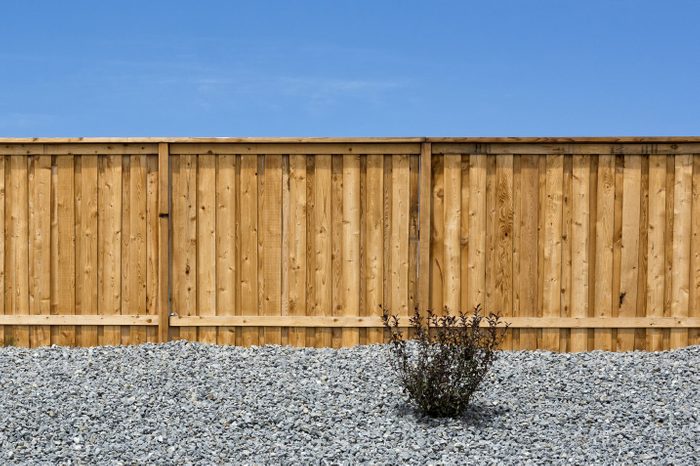
Board-on-Board
This is a type of privacy fence made by attaching every other picket to the opposite side of the rail. The overlapping design results in a sturdy, solid fence that’s just as attractive from either side, though the additional material required adds to the cost.
With no gaps or spacing between pickets, board-on-board fencing is great for those seeking maximum privacy. The pickets can be oriented vertically or horizontally.
Pros
- Sturdy construction;
- Total privacy;
- Overlap won’t allow cracks if wood shrinks;
- Attractive design.
Cons
- Overlapping design requires more material, which increases the cost.
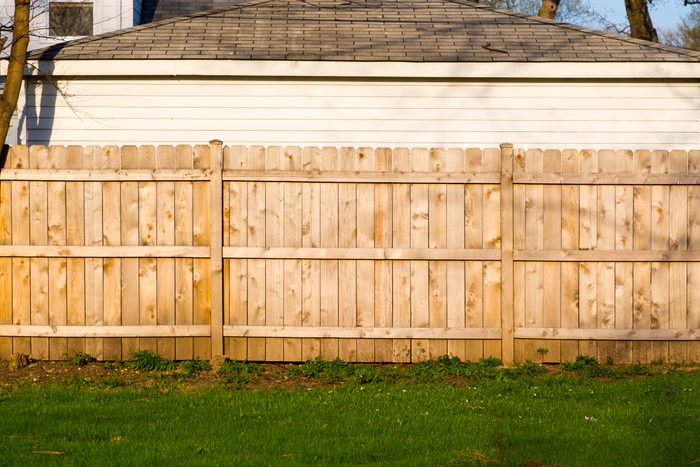
Side-by-Side
Another common privacy fence type, side-by-side fencing butts the edge of each picket against the next to create a solid wall. Be aware: Any shrinkage of the pickets can result in gaps that compromise privacy.
Just like board-on-board fencing, this can be installed horizontally or vertically. With no overlapping, material costs are lower than for more complex wood fence types.
Pros
- Costs less than most wood fence types;
- Relatively simple to install.
Cons
- High chance of gaps due to wood shrinkage;
- Not as visually interesting as other fence types;
- One side shows the exposed rail and posts.
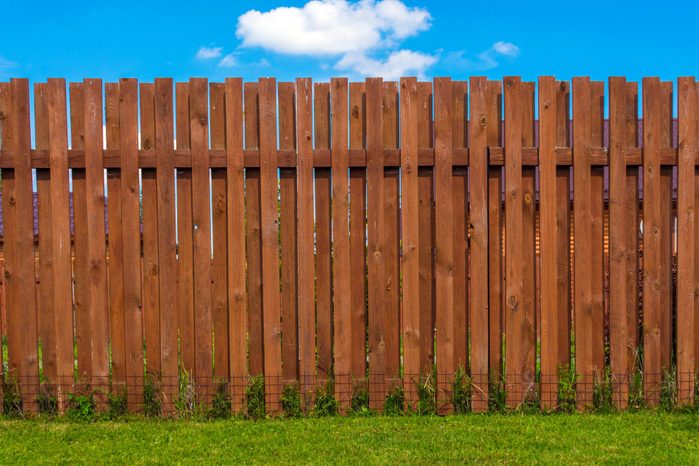
Shadowbox
This fence uses alternating pickets on both sides with a gap in between, creating a distinctive “shadow” effect. These gaps make it look solid when viewed head-on. But from an angle, you can see through to the other side.
Pros
- Visually interesting;
- Your neighbor doesn’t see the less attractive side;
- Alternating pickets spread the weight evenly for high durability.
Cons
- Gaps allow neighbors or pedestrians to see inside;
- Challenging to install correctly.
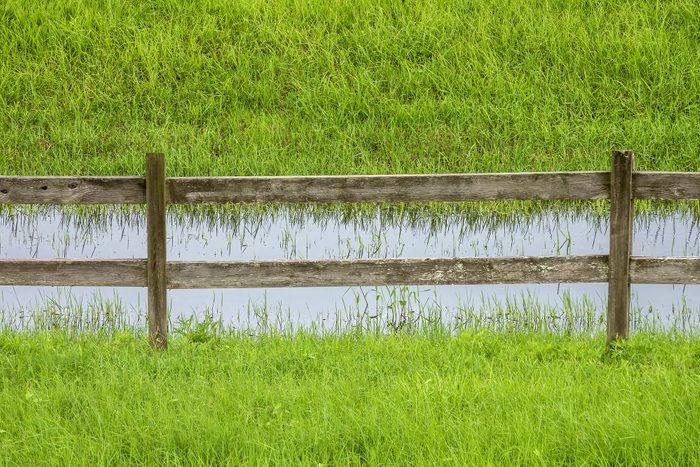
Post-and-Rail
Post-and-rail fences feature long, smooth-cut rectangular timber rails suspended between large posts. These fences are not as rough and rustic-looking as split-rail fences.
This style works for farms and large properties that need to contain livestock or just want to establish clear property lines. Made of less fencing material than a tightly packed picket fence, post-and-rail fencing is relatively easy to install and repair.
Pros
- Easy to repair;
- Provides open views;
- Great for securing livestock.
Cons
- Not much of a guard against wind;
- Not effective for keeping out intruders.
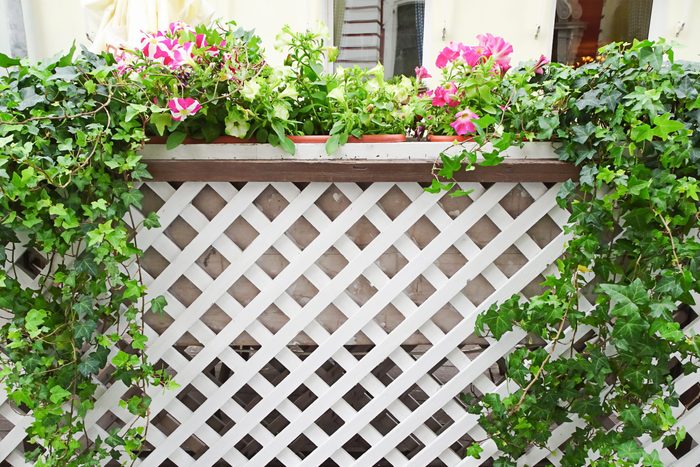
Lattice
Similar to the lattice on a garden trellis, lattice fencing features crisscrossed strips of wood, creating an attractive, ornamental design.
Wood lattice material can be used for full-size fences or as a decorative topper for a different style. Lattice fencing works for gardens because it keeps out deer and rabbits while letting in light and permitting airflow. It’s also cheaper than other wood fencing types. And because it comes in pre-made panels, it’s simple to install.
Also, if you’re looking for a trouble-free landscaping option, a gravel garden might be in your future. Once established, they’re a lot less hassle than lawns and standard landscaping beds, because they need minimal weeding or irrigation.
Pros
- Lets in sunlight and airflow;
- Good balance of security and visibility;
- Attractive design;
- Perfect for climbing plants;
- Materials and installation costs much less than other wood fences.
Cons
- Not as durable as other wood fence styles;
- Lacks privacy.
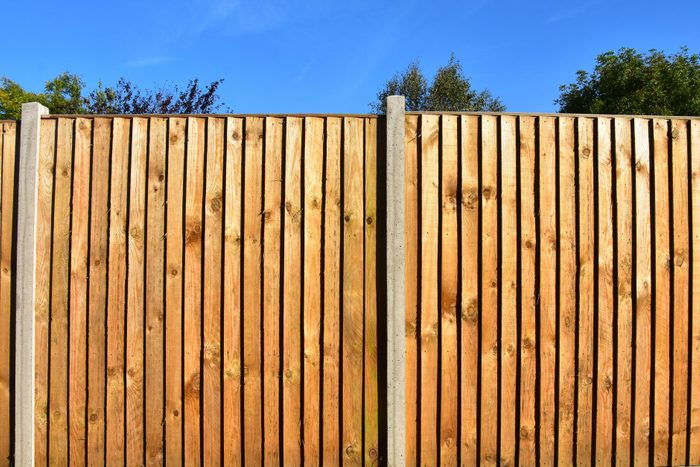
Louvered
The pickets of a louvered wood fence are angled in the same direction. That allows total privacy when viewed from one side, and visibility and airflow from the other.
These louvers can be oriented horizontally or vertically. They’re great for adding a high-end, modern look to your pool, deck or patio.
Pros
- Airflow;
- Provides privacy and visibility;
- Allows sunlight for plants and gardens.
Cons
- Challenging installation for DIYers.
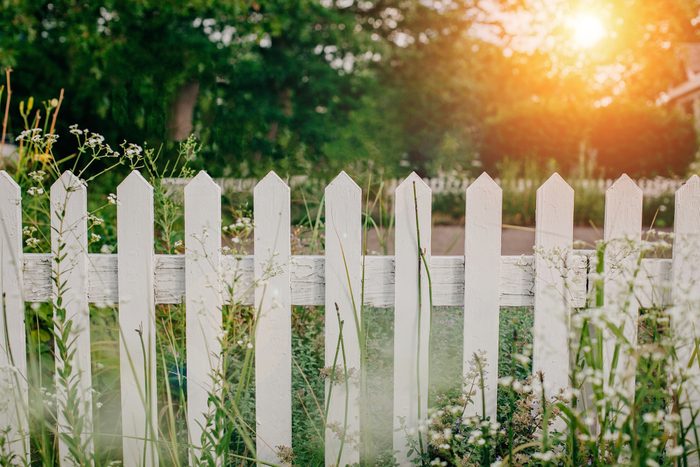
Picket
This classic wood fence style features evenly-spaced pickets, providing some visibility while maintaining security. This style is best for those who want a secure boundary that’s still welcoming to guests and neighbors.
You can customize the gap size between pickets, but make sure it’s not so large that kids or pets can escape or get stuck. Although traditionally painted white, a natural wood picket fence can add a modern look. Picket fences tend to be relatively short. Consequently, the cost of materials tends to be lower than other fence styles.
Pros
- Great for gardens because they allow sunlight to shine through;
- Lower cost than most other fence types;
- Can customize height, shape of pickets, gaps, etc.;
- Let’s you see what’s going on outside.
Cons
- Not great for privacy;
- Not practical for high fences;
- Won’t stop intruders.
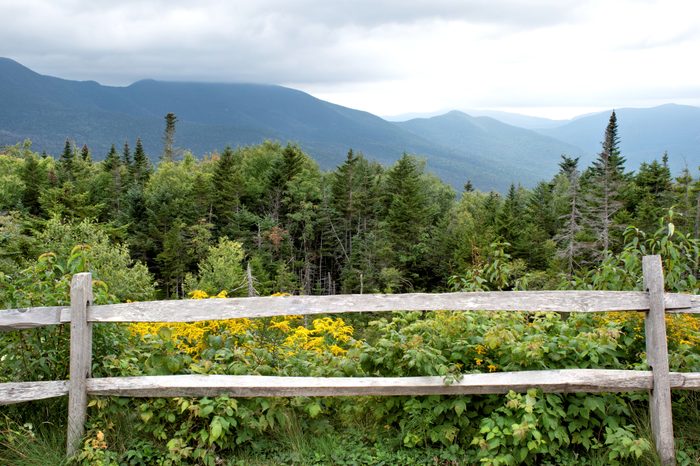
Split-Rail
This simple wood fence style dates back to Colonial days. Using logs “split” lengthwise into fourths or eighths as rails, two to four are placed between posts with plenty of space between them.
Though impractical for privacy or security (except for containing large livestock), split-rail fences add a decorative, rustic look to your yard while defining property lines.
Pros
- Gives property a rustic look;
- Physically demanding installation;
- Affordable price, due to the limited number of pieces.
Cons
- Not good for privacy;
- Only provides a secure boundary for livestock.
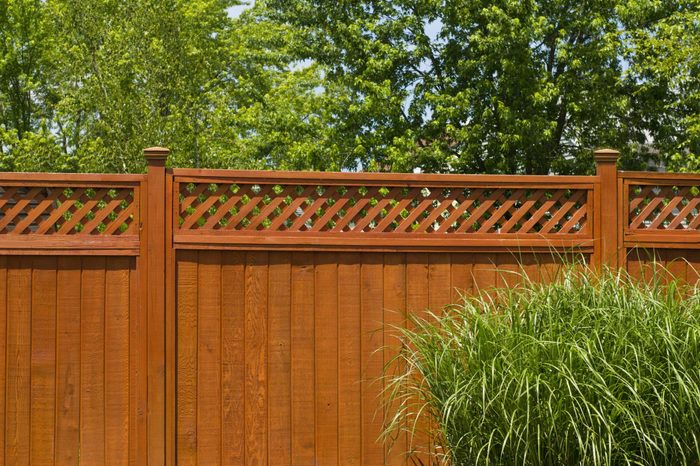
Bonus: Fence Toppers
While technically not a wood fence style, toppers add a decorative accent and a little visibility to an existing wooden fence. Fence toppers come in various styles and sizes, so there’s likely a perfect option to complement your fence and home if you’ve got the budget for it.





















